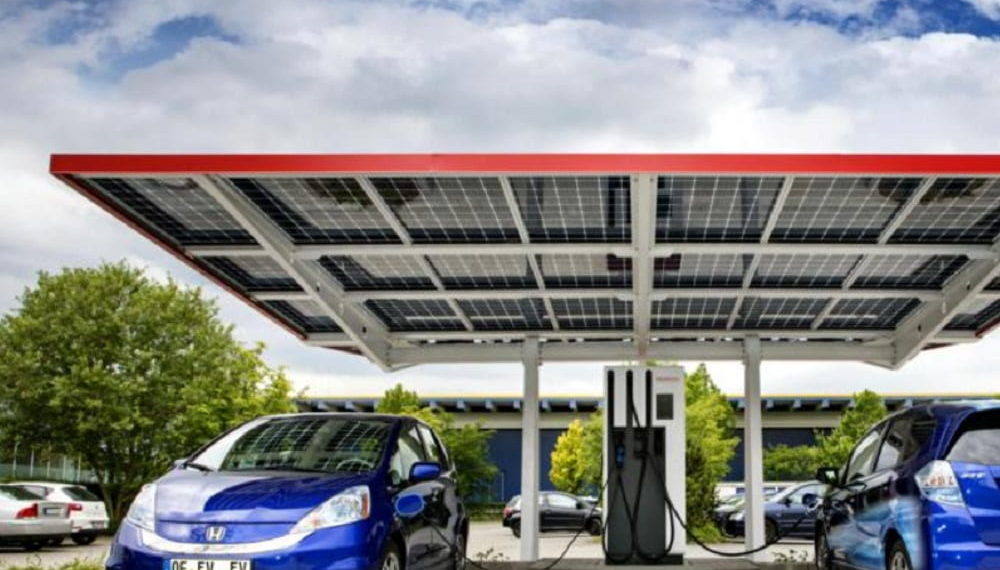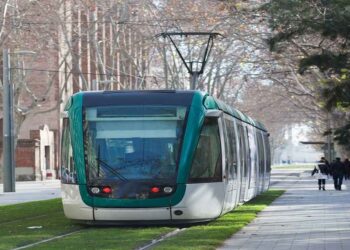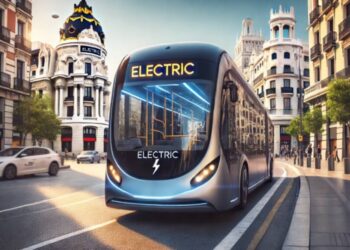The combination of solar energy and electric vehicles enables new, pioneering use concepts for private households and companies alike. Even small photovoltaic (PV) systems with only three kilowatts peak provide enough power to drive an electric vehicle thousands of kilometers a year – without harming the environment.
Find out everything there is to know about concepts for the path to a successful transportation transition at Power2Drive Europe. The international exhibition for charging infrastructure and electromobility will take place as a part of The smarter E Europe – the innovation hub for empowering new energy solutions. Over 200 suppliers of charging infrastructure and electric vehicles as well as 50,000 visitors are expected from May 15–17, 2019 at Messe München.
One asset of e-mobility is how perfectly it can be combined with renewable energy. Electric vehicles can be driven and charging stations can be fed with electricity from PV systems. Ideally, electric vehicles are charged with solar power directly from the owner’s roof. Electric vehicles are notably more efficient than conventional fuel-burning vehicles. A PV system with a capacity of three kilowatts peak in a single-family home in Germany can provide enough power annually to operate an electric car for around 14,000 kilometers emission free. This will be of particular interest for all those PV system owners who will lose their eligibility for EEG subsidies in 2021 or later, once their installations are more than 20 years old. For them, completely new business models such as the operation of solar filling stations are also in the works, with many suppliers having already developed the necessary software. Innovative areas of business are also opening up in many other sectors. Some solar technology suppliers are expanding their business activities and cooperating with manufacturers to offer electric vehicles for sale or lease.
Avoiding grid congestion with energy management and battery storage systems
A field test in Fellbach, Germany, tested the functionality of grid management in conjunction with electric vehicles. The Fraunhofer Institute for Solar Energy Systems (Fraunhofer ISE) has developed a household energy management system that optimizes electric vehicle charging to maximize the supply of self-generated power from photovoltaic installations. The system develops and monitors charging schedules, taking into account yield forecasts and the household load. This intelligent, foresighted control technology enabled the photovoltaic system to provide 86 percent of the charging power needed on a sunny day. Without the charging algorithm, it would have only achieved 46 percent.
With e-mobility, grid congestion can be prevented for the most part through intelligent coordination of renewable energies and storage systems. A current study conducted at the TU Braunschweig has shown that, by employing solar installations connected to battery storage systems, around 60 percent of all homes connected to the power grid in neighborhoods of private one- and two-family houses can be supplied by their own 11 kW charging stations for electric cars. This significantly relieves stress on the normal power grid. As of now, most new solar power systems are being installed with a battery storage system, according to the German Solar Association (BSW-Solar). “Using solar power generated on their own roof in conjunction with battery storage systems installed in their basement, anyone can turn their home into a fuel station that enables clean mobility around the clock and helps to avoid expensive grid expansion,” says BSW’s CEO Carsten Körnig.
More and more initiatives are being started and ideas implemented. For instance, a new employee parking garage at an IT company in Neckarsulm, Germany, has been outfitted with a 750 kW PV rooftop installation, which provides most of the energy necessary to power 50 charging spots. Load management enables the power to be precisely distributed. For instance, if one employee were to need more charging power and another less, the load management would adjust the system accordingly. It can even decide if self-generated solar power should be used or if supplementary power should be purchased from the public grid.
Power2Drive Europe offers reliable guidance
Power2Drive Europe provides the interface between the electrification of transportation and a future-oriented, environmentally friendly, carbon-neutral energy supply by providing a platform for the topic of charging infrastructure at both the exhibition and the conference. Visitors will have the opportunity to find out everything worth knowing about charging solutions and technologies for electric vehicles on all three days of the exhibition. The Power2Drive Europe Conference will also feature discussions from experts, associations and research institutes on business models and the industry’s market potential.
The combination of electric vehicles and photovoltaics is also a central focus of this year’sPower2Drive Europe Conference and the Power2Drive Forum in hall C3. On Tuesday, May 14 at 11:30am, electrive.net Editor-in-Chief Peter Schwierz will be heading the Conference session “The eMobility Industry in 2019: Progress and Prospects.” At the session, current electric vehicles and charging infrastructure models across the world will be analyzed, the current strengths of the industry evaluated and forecasts for the upcoming year introduced. Peter Schwierz stresses, “E-mobility is headed for a breakthrough. In the coming years, a large number of vehicle models from various manufacturers will finally enter the market. This will be accompanied by a major expansion of charging infrastructure, making new approaches such as sector coupling financially attractive. We couldn’t be living in a more exciting time.” The 2:30pm session called “Nascent eMobility Markets: Insight, Analysis and Areas of Opportunity” will take place directly afterward and will focus in detail on select e-mobility markets, identify the regions displaying particular potential, shine a light on the most important influential factors and provide insight into future forecasts.
At the Power2Drive exhibition forum in hall C3, there will be a series of presentations on Thursday afternoon on the topic of “Photovoltaics and E-Mobility,” presented in cooperation with the German Association for Solar Mobility (BSM), a partner of the exhibition. BSM Chairman Thomic Ruschmeyer, who will be leading the session, explains the concept of solar mobility, saying, “E-mobility is the most efficient way of powering all vehicle types and can feed renewable energy – particularly solar energy generated on the owner’s roof – directly into the batteries, thus enabling exceedingly environmentally friendly mobility of all kinds. Our mobility of the future has no other option but to become carbon neutral as quickly as possible. Aside from efficient electric drive mechanisms and smaller, lighter electric vehicles, this also requires the most direct possible use of renewable electrical energy.”
At Power2Drive Europe, the international exhibition for charging infrastructure and electromobility, just one part of the innovation hub The smarter E Europe, many well-known companies such as BayWa r.e., GP JOULE Connect, The Mobility House GmbH, SolarEdge, Parkstrom, Ingeteam, Tesla, sonnen, Hydrogenics and Alfen will be presenting exciting examples of smart integration of e-mobility in renewable energy systems.


































